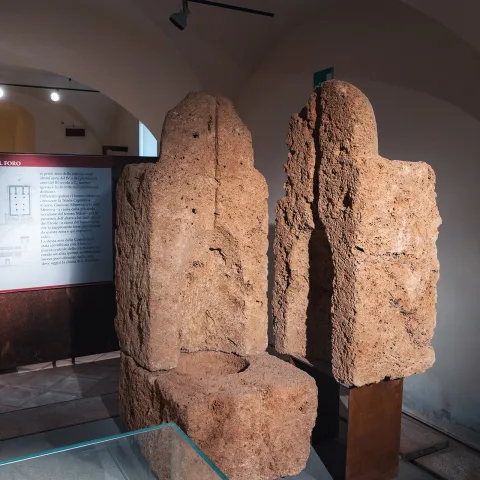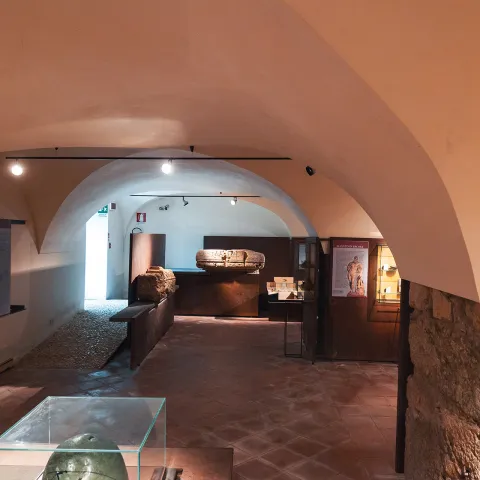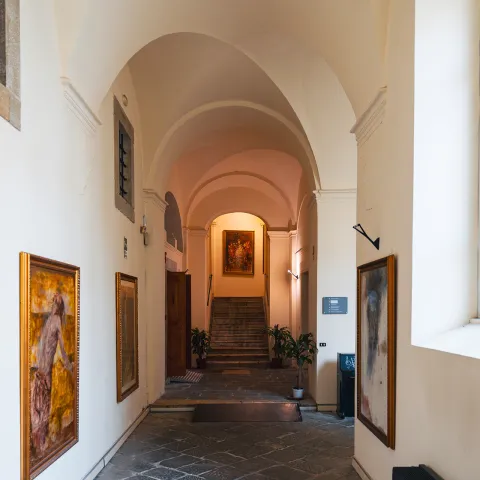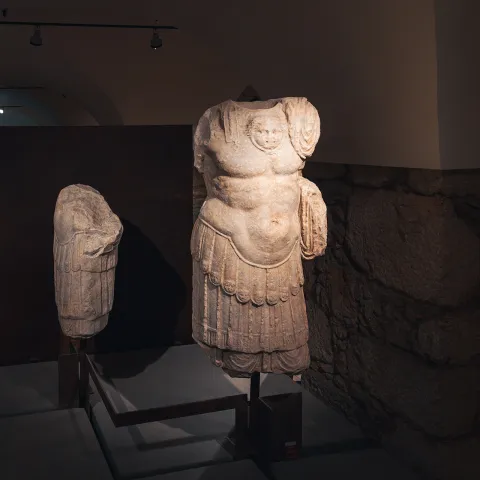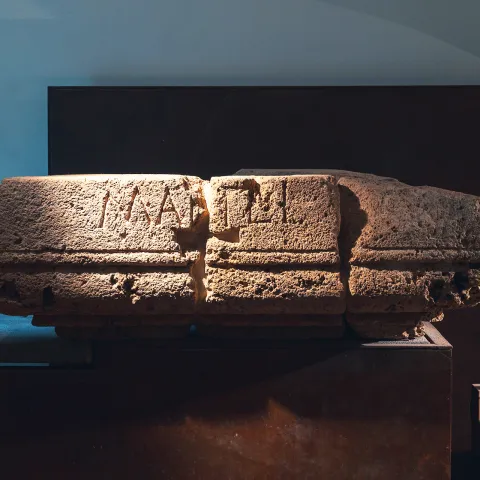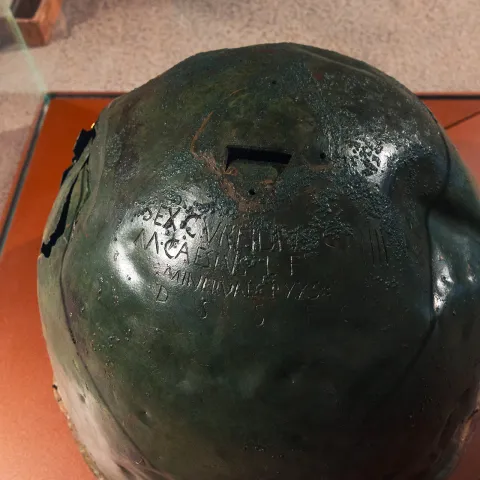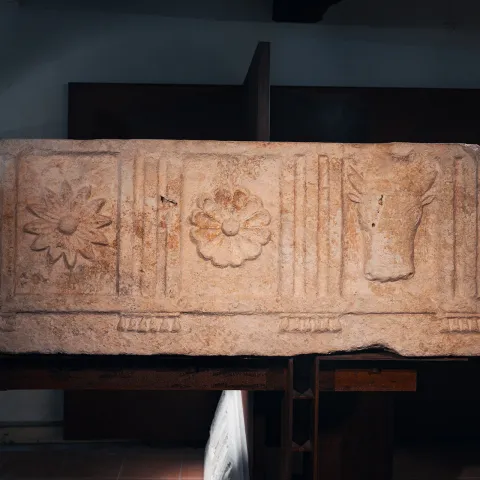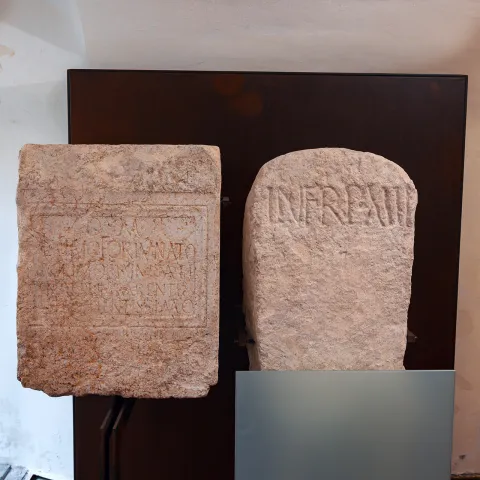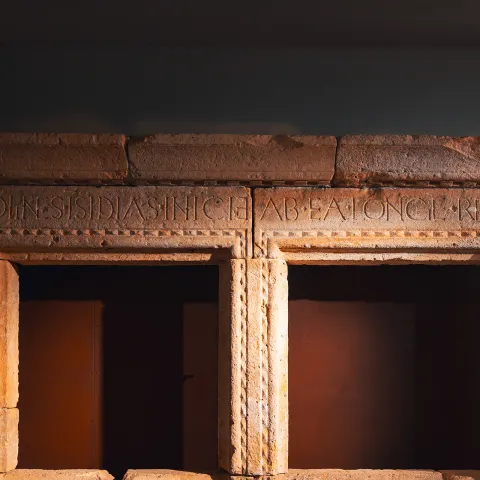Museum of the Media Valle del Liri and Mayer Ross Square
The museum is housed in the 14th-century building of the ex Convent of the Minor Conventual Friars, which was renovated and expanded in the 18th century
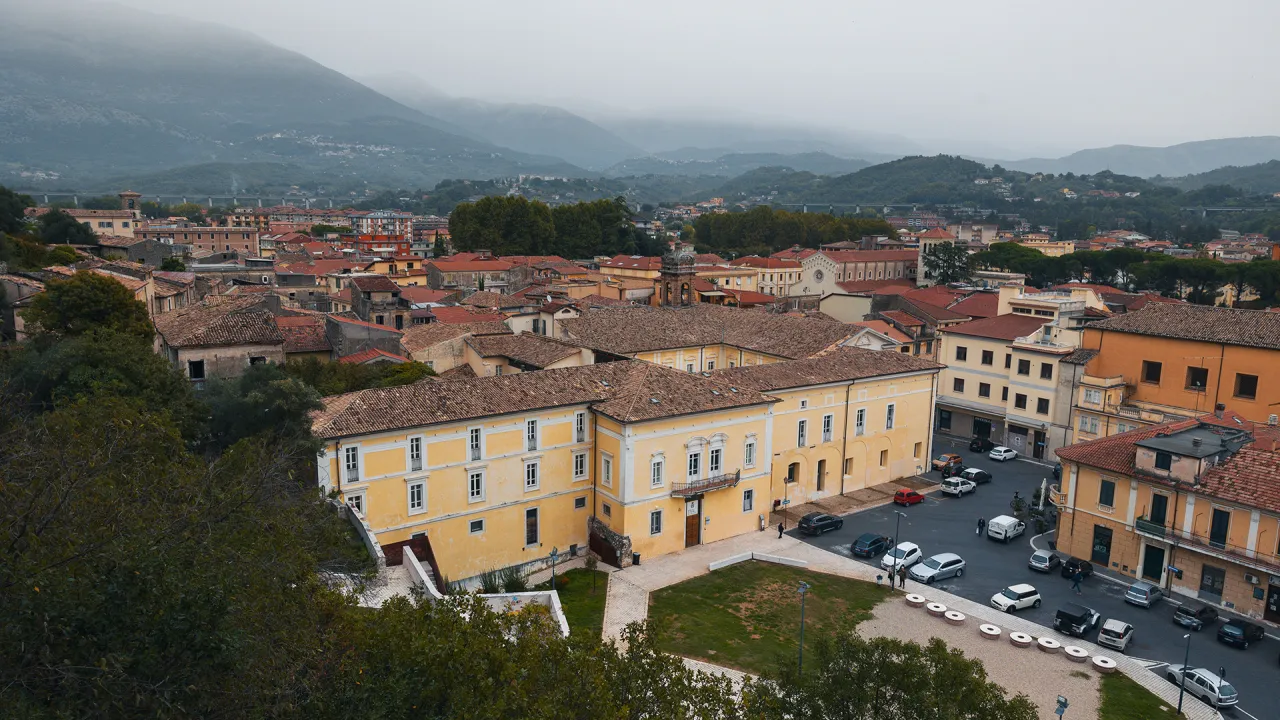
Between 1875 and 1900, extensive correspondence between Giuseppe Fiorelli (general director of excavations and museums of antiquities), Antonio De Nino (inspector of excavations and monuments) and the Municipality of Sora testifies to the institutional commitment to collecting stone materials from the area and dispersed thereabouts to prevent their dispersion and loss.
It was only in 1979 that the Museum of the Media Valle del Liri was officially established and opened to the public on 20 April 2005, with its first room dedicated to archaeological finds from the Roman era. In 2010, additional sections were inaugurated, thus completing the entire exhibition dedicated to the historical and archaeological aspects of the territory. The museum's collection illustrates the history of the city and its surrounding area following chronological, thematic and topographical criteria, covering periods from prehistory to the Volscian era and Romanization.
The main core of the collection consists of artifacts from excavations at the Roman temple incorporated into the Cathedral Church of Santa Maria Assunta and includes the thesaurus and its bronze dome with a dedication to Minerva, the altar of Mars and the architectural terracotta that once covered the temple. The collection also features numerous epigraphic documents, the remains of funerary monuments (1st century BC–1st century AD), with their furnishings, including statues of military tribunes. The tour continues through medieval and modern times, also dealing with themes related to industrialization, with the birth and development of local paper mills.
The museum overlooks Piazza Mayer Ross, where archaeological excavations conducted between 2004 and 2005 uncovered a series of fascinating wall structures pertaining to a domus from the late Republican and early Imperial era. It features rooms with opus signinum and black and white mosaic floors with geometric decorations. Later, during the early Middle Ages, structures were built on top of the domus using reused Roman materials. These structures are likely associated with the first construction phase of the Convent of St. Francis in the 14th century.
PHOTO GALLERY

VIDEO



